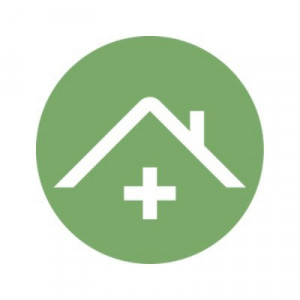The University of Maryland Medical System is a 14-hospital system with academic, community and specialty medical services reaching every part of Maryland and beyond. UMMS is a national and regional referral center for trauma, cancer care, Neurocare, cardiac care, women’s and children’s health and physical rehabilitation. UMMS is the fourth largest private employer in the Baltimore metropolitan area and one of the top 20 employers in the state of Maryland. No organization will give you the clinical variety, the support, or the opportunities for professional growth that you’ll enjoy as a member of our team.
Job Description
General Summary
The Clinical Nurse II (Per Diem and LTA), is responsible for providing direct and indirect patient and family care in inpatient and approved surgical and ambulatory care areas. The nurse is expected to competently perform the patient care responsibilities of the registered nurse within the assigned work setting. The nurse delegates and supervises care in accordance with the Nurse Practice Act and the professional nursing role. Care is provided in collaboration with other members of the clinical team, and with the use of critical pathways or multidisciplinary plans of care.
Principal Responsibilities and Tasks
The Clinical Nurse II systematically collects and assesses data in collaboration with the multidisciplinary team to provide therapeutic care for the patient and family. The nurse follows the prescribed plan of care and documents the progress towards achieving defined outcomes. Continuity in patient care is achieved through concise communication with the Charge Nurse or Unit manager. The following are not to be construed as an exhaustive list of all job duties performed by personnel so classified.
Clinical Practice:
- Demonstrates the ability to provide nursing care relative to the patient’s age specific needs.
- Elicits patient and family participation in care in keeping with physiological and psychological readiness.
- Evaluates and documents patient response to prescribed interventions.
- Collaborates by establishing acceptable interpersonal relationships with co-workers and colleagues, patients and families.
- Provides concise communication regarding the patient’s progress to the Charge Nurse, other nursing staff members, and other health care practitioners.
- Skillfully uses the range of equipment, medicines, and other modalities, such as CPR, as well as the procedural and educational resources pertinent to assigned work areas. Demonstrates knowledge of purpose and expected outcomes.
Service/Quality:
- Acts to facilitate cost control in use of material resources by regularly consulting with Charge Nurse regarding the predominant patient problem, or co-existing problem so that a course of action can be more astutely planned to achieve continuity of care.
- Demonstrates commitment to patient/family cultural beliefs and practices by carrying out interventions as noted on critical pathways or multidisciplinary plan of care.
- Demonstrates trust, respect, honesty, and caring attitudes with patient/families and other members of the health care team.
- Participates and contributes to Performance Improvement, or Evidence Based Practice, or research at the unit level.
- Complies with standards and participates with unit level activities for regulatory compliance.
Unit Operations:
- Supports charge nurse decisions; performs charge role for assigned shifts as needed.
- Observes hospital policies and procedures that ensure the security and safety of patients.
- Follows and supports the AACN guidelines for Healthy Work Environment (communication, collaboration, effective decision making, recognition, leadership, staffing); participates as team member focusing on elements within the Healthy Work Environment.
Professional Development:
- Serves as preceptor, coach, mentor to new nurses and students. Contributes to ancillary personnel skills and development, attends educational offerings and in-services independently.
- Completes all educational annual requirements.
- Responsible for maintaining competencies for the patient care setting.
Patient Safety
Ensures patient safety in the performance of job functions and through participation in hospital, department or unit patient safety initiatives.
- Takes action to correct observed risks to patient safety.
- Reports adverse events and near misses to appropriate management authority.
- Identifies possible risks in processes, procedures, devices and communicates the same to those in charge.
Qualifications
Education & Experience
- Unencumbered license as a Registered Nurse in the state of Maryland, or a Nurse Compact License (NSL)
- BSN preferred.
- Two years of recent (within the past 12 months) relevant clinical hospital nursing experience in a comparable setting (See attached Professional Self-assessment skills checklist).
- Maintenance of 10 contact hours of education every two years.
License and Certification
- Med-Surg/Telemetry
- Basic Life Support (BLS)
- National Institute of Health Stroke Scale (NIHSS)
- Labor & Delivery (L&D)
- Basic Life Support (BLS), Neonatal Resuscitation Program (NRP)
- Mother/Baby
- Basic Life Support (BLS), Pediatric Advanced Life Support (PALS)
- Pediatrics
- Basic Life Support (BLS)
- Operating Room (OR)
- Basic Life Support (BLS)
- Intermediate Care Unit (IMCU)
- Basic Life Support (BLS)
- National Institute of Health Stroke Scale (NIHSS), Advanced Cardiac Life Support (ACLS)
- Behavioral Health
- Basic Life Support (BLS)
- Cognitive Behavior Interventions (CBI) Training
*All Basic Life Support (BLS), Advanced Cardiac Life Support (ACLS) must be obtained through the American Heart Association. Pediatric Advanced Life Support (PALS), Neonatal Resuscitation Program (NRP) must be obtained through the American Academy of Pediatrics and the American Heart Association.
Knowledge, Skills & Abilities
- Demonstrates effective interpersonal, verbal, and written communications.
- Maintains patient and family privacy and confidentiality.
- Evaluates and reports patient response based on expected outcomes identified in the interdisciplinary plan of care in order to facilitate transition to home or continuing care and ensure a timely discharge.
- Ability to learn and use computer systems in order to manage patient information.
- Ability to participate in team-building efforts on units; supports and models’ teamwork
- Ability to demonstrate knowledge and skills necessary to provide care appropriate to the patient population(s) served. Ability to demonstrate knowledge of the principles of growth and development over the life span and ability to assess data reflective of the patient's requirements relative to his or her population-specific and age specific needs.
Additional Information
All your information will be kept confidential according to EEO guidelines.









